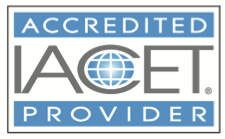
Most employees will only stay at company long-term if they’re able to grow their careers. To do so, they’re eager and willing to learn new skills that can benefit them in their roles and contribute to your company. Consider:
- 94% of employees would stay at a company longer if it invested in helping them learn, CNBC reports.
- 74% of workers are willing to re-train or learn new skills in order to remain employable, according to PwC’s “Workforce of the future: the competing forces shaping 2030” report.
- 59% of Millennials say opportunities to learn and grow are extremely important to them when they’re applying for jobs, according to Gallup’s “How Millennials Want to Work and Live” report.
One way to attract top candidates and retain the ones you’ve hired is to offer employees a career development plan. Career development plans show your employees you’re invested in their long-term success, which could motivate them to work harder and stay with your company longer.
This guide explains what a career development plan is, how to create them for employees and how to include learning and development in career development plans.
What Is a Career Development Plan?
Think of a career development plan like a roadmap that details your workforce’s career journeys with your company. A career development plan is a written document that identifies:
- Where an employee is now
- Their long-term career goals with your company
- The steps and roles they can take along the way to attain their goals
The career development plan can be as detailed as the supervisor and worker want it to be. Along the way to each milestone or achievement, there might be details like:
- Specific accomplishments
- Job assignments and projects to work on
- Education or training to complete
- Credentials or certifications to obtain
- Developmental activities
A worker may also identify certain supervisors or trainers they want to work with to learn new skills from, or specific programs to take to expand their knowledge. They might also choose tasks to do and skills to learn that address any weaknesses they have. These can all be added to a career development plan.
Career development plans are beneficial to have because you can grow your talent from within, which can save you on hiring and recruiting costs. You’ll also gain a clearer view into the skills your workforce possesses, so you can hire based on gaps you need to fill in.
How to Create a Career Development Plan
You can mention career development plans as early as during the recruiting and hiring phase. You might consider enlisting your human resources team to create a template for employee career development plans, so they’re equitable throughout the workforce.
An ideal manager for the career development plan is each worker’s supervisor, since they have direct contact with the worker. Also, managers account for at least 70% of variance in employee engagement, according to Gallup research. Since managers see the day-to-day progression of those they manage, it makes sense to have them involved.
In the creation phase of a career development plan, the worker should understand the company goals and vision so they make sure what they want to achieve aligns with overall business goals.
The manager should ask the employee what they feel their strengths are, so those are the focus of the career development plan. Gallup reports strengths-based development results in a 9% to 15% increase in engaged employees. Throughout the career development plan creation process, the manager should ask the employee how they feel they can apply their strengths to each role.
Managers should ask employees what they want to learn in order to achieve their goals. You might offer corporate training programs and then plug employees into relevant ones that align with their learning objectives. Or, you could offer to cover part or all of tuition costs for online business programs. Ideally, education that’s completed may lead to increased responsibilities or role titles along the career development plan.
Write out a plan that details steps that include ways to measure success and deadlines to aspire to. The plan can span a year, a couple years and up to five years or more so the employee stays engaged and there are expected check-ins to monitor progress. Along the plan, identify potential mentors or trainers at work who can also work with the employee to develop their skills.
Make sure the manager establishes regular check-ins with the employee so together, they can consider career development plan progress, obstacles and achievements. Career development plans should be adaptable, so that the plan can change according to progress. Additionally, an employee may learn that their goals are evolving, so changes in the plan can accommodate those new goals.
Measure Career Development Plan Success
Before you begin a career development plan program, think about your goals as an organization. Do you want to increase employee engagement? Boost retention? Attract higher-quality talent?
Create ways to measure your career development plan program. Ask for input from managers and current and leaving employees about what they think of the program, so you can also evolve your strategy over time.
Career development plans that include access to training and development can strengthen your workforce. Wharton Online offers corporate training programs in subjects like leadership and strategic management for groups of at least 100 individuals. You can customize your learning platform based on your organization’s goals. Contact us for information.



